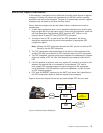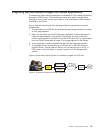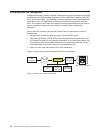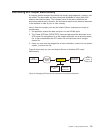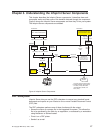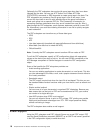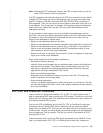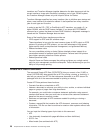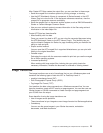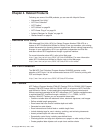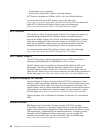
Note: Although the PDF subsystem interacts with PSF to send e-mail, you do not
need a PSF licence to use the subsystem.
The PDF subsystem can add index tags to the PDF file or convert the input data to
multiple PDF files where you have inserted group tags. You can insert group tags
with AFP Toolbox for AS/400, the Create AFP Data (CRTAFPDTA) command, or
DDS keywords. Then you can use the e-mail support to send each output file to an
e-mail address. This is essential, for example, for separating customer statements
when they are all created from one job. PSF can e-mail each statement to the
appropriate customer.
To use automatic e-mail support, you must associate e-mail addresses with the
input files. You must also specify appropriate values in the PSF configuration object
you specify in the device description associated with the printer writer. You can
specify e-mail addresses in several ways:
v Specify e-mail addresses directly in the data.
v Specify e-mail addresses in the device description associated with the printer file.
v Specify e-mail keywords, such as customer IDs, in the data or in the printer file.
Use an e-mail exit program (specified in the PSF configuration object) to map
each keyword to one or more e-mail addresses.
v Specify e-mail tags in the printer file and use an e-mail exit program to map each
tag to one or more e-mail addresses.
Some of the benefits the e-mail support provides are:
v Re-engineer business process
Infoprint Server e-mail support lets you substitute paper creation and distribution
with electronic processes. This reduces costs and decreases cycle time. This
also lets you implement new business-to-business and business-to-customer
applications with output distributed in PDF format.
v Sales and marketing advantage
Businesses that use electronic output are easier to work with. This helps you
remain competitive and increase sales.
v Avoid rewriting applications
You can use existing applications to create documents in a new format. This lets
you take advantage of the Web, e-mail, and a popular document format without a
lot of costly overhead.
PCL, PDF, and PostScript Transforms
Infoprint Server for iSeries can transform PCL 6, PDF 1.3, and PostScript level 3
data to image-based AFP data for printing on IPDS printers. This lets you print data
directly from the Internet, client PCs, and other server nodes within your network on
your iSeries-attached IPDS printers.
You can use LPR or NetServer to print the PCL, PDF, or PostScript file from your
workstation on your OS/400 IPDS printer. NetServer lets you share an OS/400
printer with your Windows PC, then you can send data from your PC directly to the
OS/400 printer. The jobs are automatically transformed using the job characteristics,
such as paper size, that you specify. This lets you use all of the benefits of IPDS
printing with PC files.
These transforms work just like an IPDS printer connected to your OS/400. To use
them, you simply send a PCL, PDF, or PostScript job to the printer. Image print
Chapter 3. Understanding the Infoprint Server Components 19
|
|
|
|
|
|
|
|
|
|
|
|
|



